You probably have fond memories of eating potatoes. Whether baked, mashed, roasted, or grilled, these veggies are crowd-pleasers and can be delicious comfort foods.
In fact, potatoes are by far the world’s most popular vegetable. And each year, Americans eat an average of 126 pounds of them.
But a lot of confusion and differing opinions exist about potatoes.
So what’s the truth? Are potatoes healthy? And should you eat more or less of them? After reading this article, you might change the way you think about potatoes.
Why Are Potatoes Controversial?
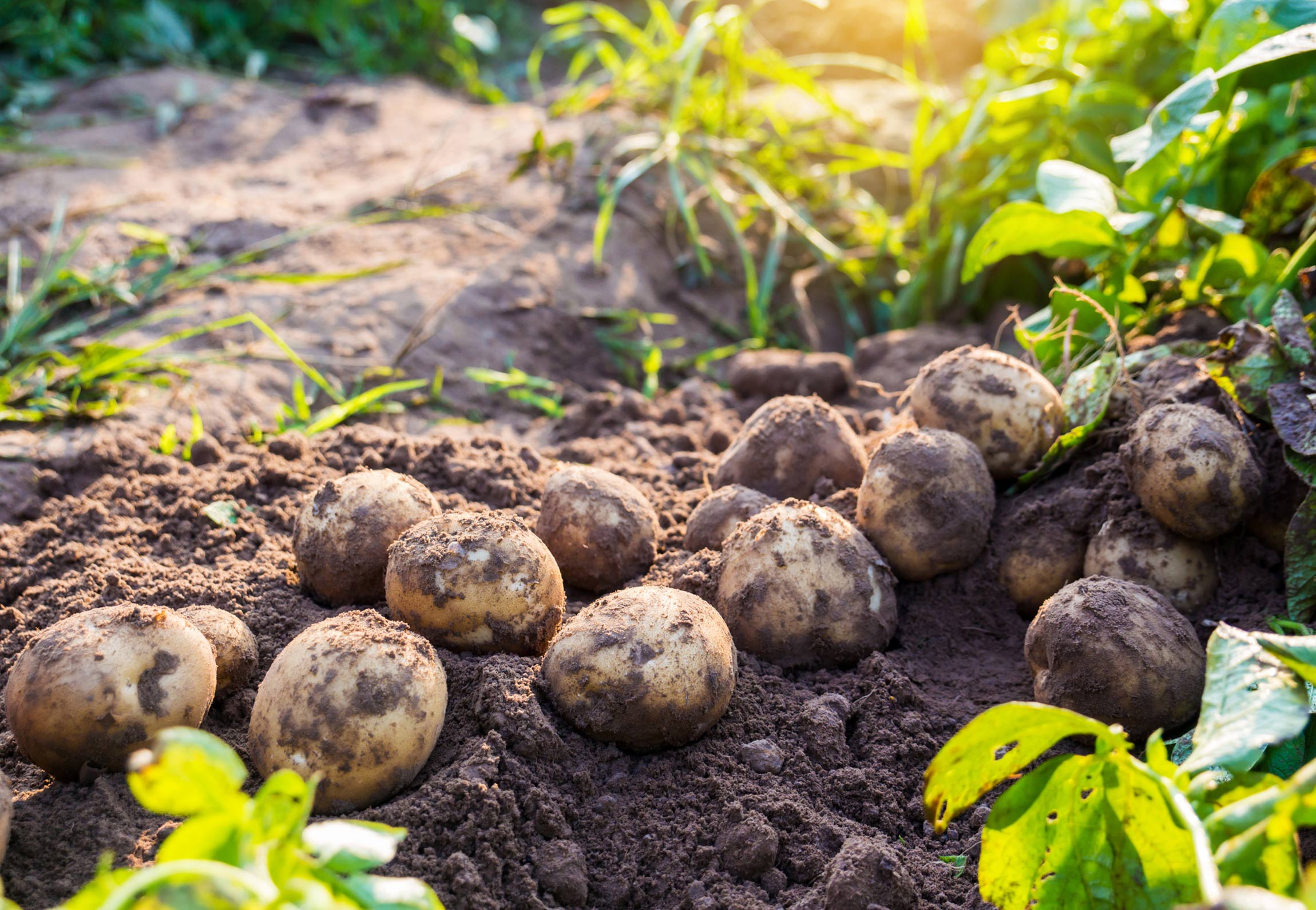
If you do an online search for potatoes, you’ll see a lot of discussion about whether they’re healthy or not.
Many nutritionists and health professionals recommend limiting potato consumption. And some food guides don’t even include potatoes in the vegetable group. So is potato good for you or not?
And why do people argue against eating potatoes?
Here are the three main reasons:
- Potatoes are high in carbohydrates, which some people believe causes weight gain.
- Potatoes digest rapidly and have a high glycemic load, which means that they can cause your blood sugar and insulin levels to spike and then dip.
- Highly processed foods like French fries or potato chips are the most frequently eaten forms of potatoes — and we all know how unhealthy those are.
But do potatoes deserve to be viewed as dangerous? And do they also provide some benefits?
First, let’s look into the weight concerns…
Do Potatoes Pack on the Pounds?
A 2011 study conducted by Dr. Dariush Mozaffarian at the Harvard T.H. Chan School of Public Health tracked the diet and lifestyle habits of 120,000 men and women for up to 20 years, looking at how small food choices contribute to weight gain over time.
The researchers concluded that there’s a strong association between potatoes and weight gain. Potato consumption was also linked to increased risks of heart disease and type 2 diabetes, as well.
But it’s not all bad news for spud lovers. According to St. Louis-based registered dietitian Alex Caspero, RD, “…potatoes are not the enemy! How we eat them is.”
While many of us eat veggies, like spinach and broccoli, in their natural state, we eat most of our potatoes processed or fried as chips and french fries. Even our baked or boiled potatoes are often peeled (losing the vitamins, minerals, and fiber found in the skin), mashed with sticks of butter or cream, and loaded with fatty toppings like chili and sour cream.
But, in a study published in the Journal of the American College of Nutrition in 2014, researchers found that when people followed healthy recipes, they lost weight even while eating five to seven servings of potatoes per week.
So it looks like potatoes are no weight loss panacea. But it also seems that their preparation, what you eat with them, and how they fit into your overall diet is what matters.
What About the Glycemic Load of Potatoes?
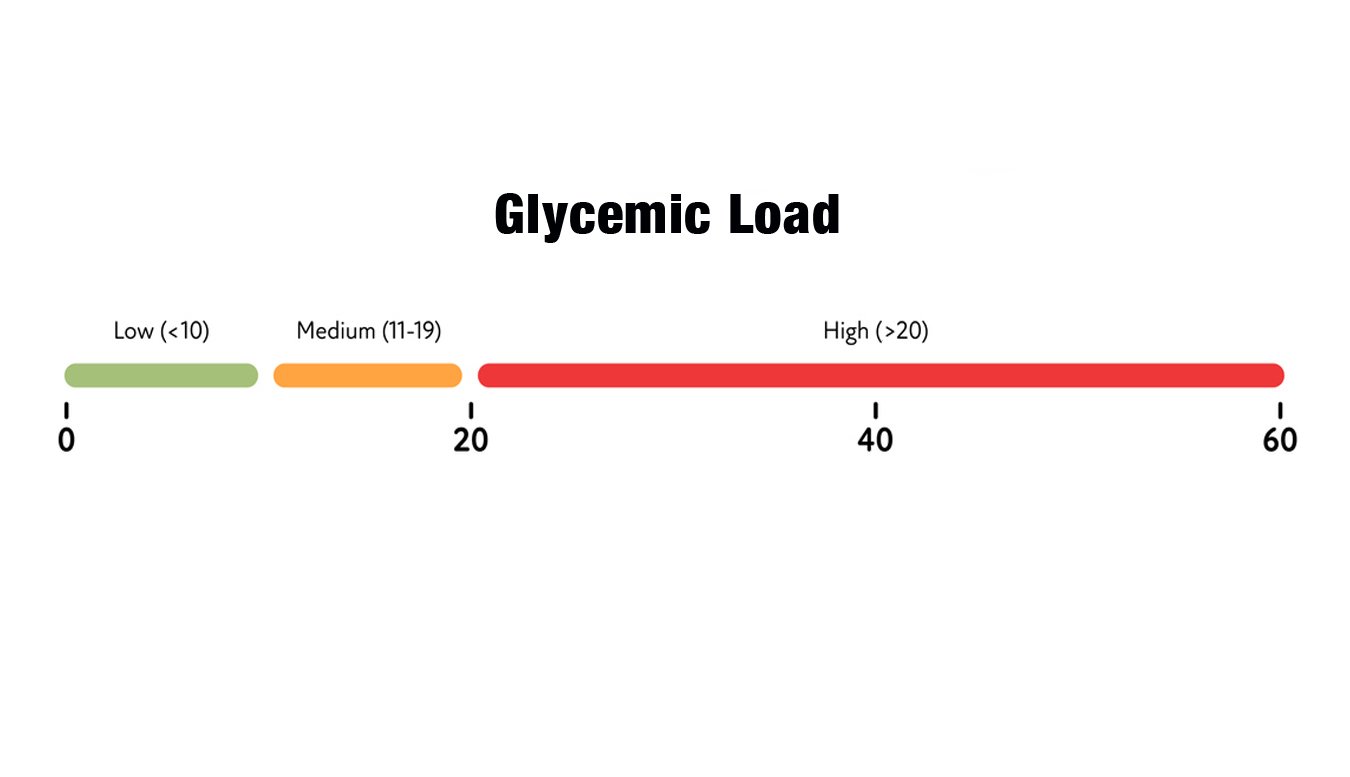
When you eat carbohydrates, your blood glucose (also known as blood sugar) levels rise and fall.
The glycemic load indicates the rate at which various amounts of carbohydrates are transformed into glucose and released into your bloodstream. Potatoes have a relatively high glycemic load, but it varies between different types of potatoes.
On a scale of 0 to 100, a baked white potato has a glycemic load of 29 (which is considered high). And red-skinned potatoes generally have a slightly lower GL of 26 (which is still considered high).
Due to their high antioxidant content, purple and blue potatoes have a lower glycemic load than white.
Why Some People Might Want to Watch Their Potato Consumption
Potatoes can be a healthy choice for most people, but three groups might want to minimize their consumption (particularly of white potatoes): pre-diabetics, diabetics, and people who are overweight.
Diabetes is a condition in which the body can’t properly produce or respond to insulin. Carbohydrates aren’t metabolized as they should be, which leads to a higher concentration of blood glucose.
As Dr. Joel Fuhrman says, “In the case of white potatoes, the literature is still incomplete, but it is clear that a large variety of more healthful carbohydrate sources exist, and that these options should be emphasized, especially in those who are obese and/or diabetic.”
For those who are not healthy or at an optimal weight, he advises eating fewer potatoes and more beans, greens, cauliflower, mushrooms, and onions.
What Nutrients Do You Get When You Eat a Potato?
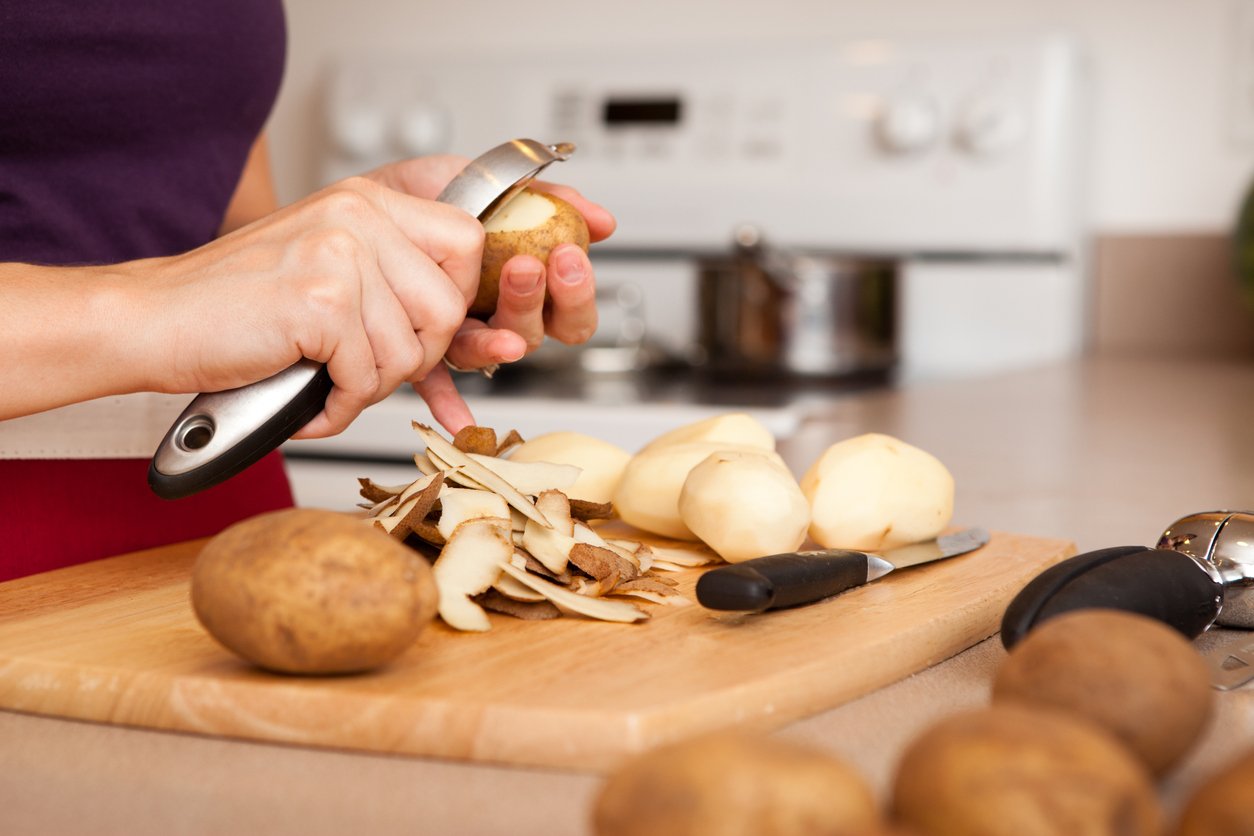
So is potato good for you? While different types of potatoes have different nutritional profiles, they all share certain health benefits, including:
- Potatoes are high in antioxidants. Some potatoes have more antioxidants than others, but all potatoes contain carotenoids, a class of plant pigments that protect against chronic disease and inflammation.
- Potatoes may help with digestion. Potatoes contain resistant starch, a particular kind of starch that isn’t broken down by the small intestine. Instead, it reaches the large intestine and feeds your body’s beneficial bacteria. When resistant starch reaches the large intestine, your body’s beneficial bacteria turn it into short-chain fatty acids such as butyrate. A 2011 study published in the World Journal of Gastroenterology found that butyrate can help protect against colon cancer and reduce inflammation in the colon.
- Potatoes may aid bone health. The minerals iron, phosphorus, calcium, magnesium, and zinc in potatoes help the body build and maintain bone structure and strength. Keep in mind, however, that most of the minerals are in the potato skin and are lost if you peel them.
The russet is by far the most widely eaten potato in North America, and it’s definitely not the most nutritious spud out there. Even so, one medium, baked russet potato with its skin intact contains:
- Calories: 161
- Fat: 0.2 grams
- Protein: 4.3 grams
- Carbohydrates: 36.6 grams
- Fiber: 3.8 grams
- Vitamin C: 28% of RDI (recommended daily intake)
- Vitamin B6: 27% of RDI
- Potassium: 26% of RDI
- Manganese: 19% of RDI
- Magnesium: 12% of RDI
- Phosphorus: 12% of RDI
- Niacin: 12% of RDI
- Folate: 12% of RDI
Types of Potatoes and Their Different Health Benefits
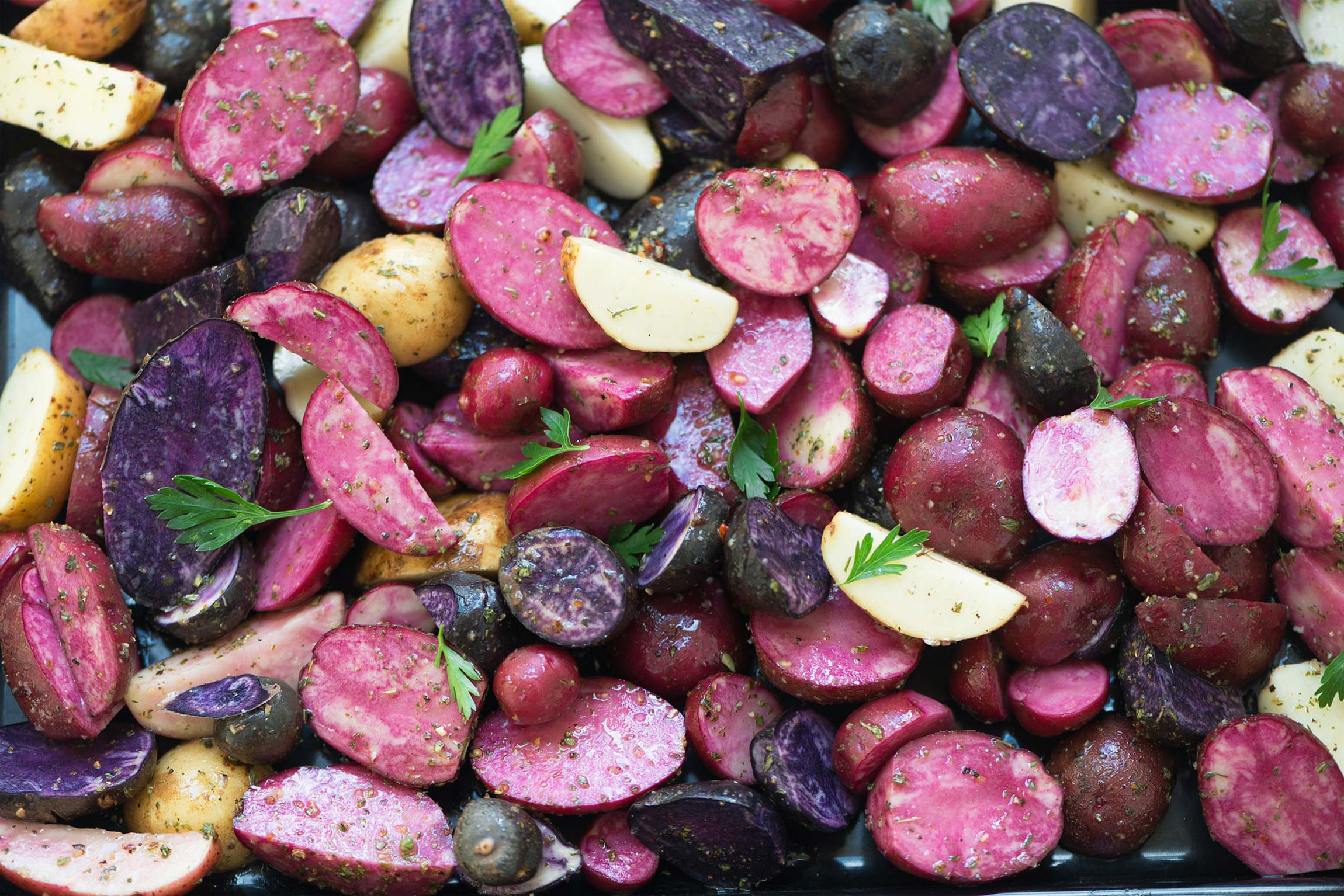
Potatoes are a diverse bunch. More than 200 different varieties of these starchy veggies are available in U.S. grocery stores, with more than 4,000 existing in the wild.
Each type of potato boasts different health benefits. Here’s more information on some of the more popular potato varieties:
- White and Yellow potatoes. Most of the potatoes you’ll find at the grocery store, such as the ones used to make baked potatoes or french fries, come from Solanum tuberosum, the common potato. Yukon Gold potatoes, Russet potatoes, and Idaho potatoes are all varieties of common potatoes. Although white potatoes are often looked down on because of their association with high-fat potato foods like potato chips, french fries, and buttery mashed potatoes, on their own, they pack a healthy and nutritional punch. White and yellow potatoes are high in fiber and resistant starch, which can improve gut health, insulin sensitivity, and even cholesterol when they’re not deep fried or slathered in fatty animal products. They also contain potassium and vitamin C, which are essential for human health. .
- Red-skinned potatoes. These rosy-hued varieties have a thin skin that’s packed with antioxidants and other nutrients. A 2004 review published in the journal Plant Soil and Environment found that red-skinned (and purple) potatoes have two to three times more antioxidant potential than white potatoes. Their red color also means that these potatoes contain anthocyanins, a specific pigment that’s been shown to improve visual and neurological health, protect against various diseases, and lower LDL (bad) cholesterol.
- Purple and blue potatoes. A 2011 study published in The Journal of Nutrition found that purple-fleshed potatoes significantly decreased both inflammation and DNA damage in healthy males. Another study published in 2012 in the Journal of Agricultural and Food Chemistry found that within hours of consumption, violet-hued potatoes increased the antioxidant capacity of the bloodstream. Researchers concluded that purple potatoes lower the risk of heart disease and stroke in patients with hypertension without causing weight gain.
- GMO potatoes. In 2015, a genetically modified “Innate” potato was approved by the USDA and FDA. The company, J. R. Simplot, created the potato primarily to resist bruising and browning. That might make sense if, while slicing potatoes, you’ve felt a great need for a high tech way to avoid ever having to cut bruises out of potatoes again. But they have no additional health benefits, and may actually have hidden dangers to your health.
Editor’s note: Potatoes are on the Environmental Working Group’s “Dirty Dozen” list of the most pesticide-contaminated foods. So if you want to reduce your exposure to pesticides and GMOs, look for potatoes labeled 100% organic or non-GMO.
Are Sweet Potatoes Actually Potatoes?
Despite their name, sweet potatoes are not a type of potato. What makes them different? Sweet potatoes are a tuberous root from the Ipomoea batatas vine, which is actually in the morning glory family. Potatoes are tubers from the Solanum tuberosum plant, which is in the nightshade family. While tubers like potatoes grow independently of the plant’s roots, on the stem, with tuberous roots like sweet potatoes, the roots themselves develop into the edible vegetables. Tubers also have eyes, which can form new plants, but tuberous roots do not.
For more about sweet potatoes, including their own exciting health benefits, check out this article.
What Matters Most if You Want to Eat Potatoes?
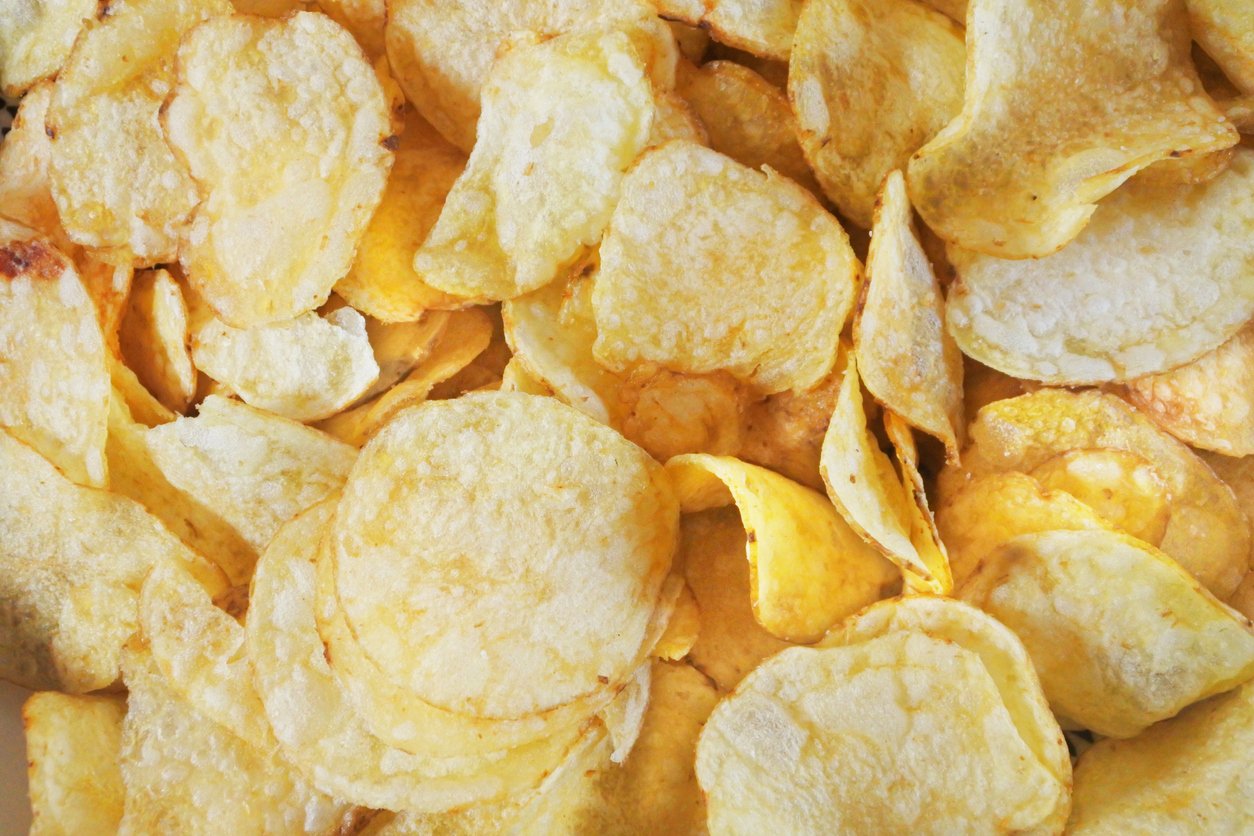
A large body of evidence tells us that for most people, potatoes can make a valuable contribution to a healthy diet. But a potato’s preparation is what makes it a healthy or unhealthy choice.
A 2017 study published in the American Journal of Clinical Nutrition found that eating fried potatoes two or more times per week doubled the risk of death.
Processed foods, like potato chips, are full of unhealthy fat and huge amounts of sodium. And when people eat baked potatoes and mashed potatoes, they often use lots of butter, salt, and other unhealthy ingredients.
How to Enjoy Potatoes the Healthy Way
Whichever type of potato you eat, the best way to maximize the health potential of potatoes is to eat them whole with the skin on.
If you’re looking for something lighter and more nutritious to put on your potatoes, here are some healthier toppers to try on your potato:
- Use salsa instead of sour cream. Use this healthy, tomato-based mix to top your potato instead of sour cream. It adds a spicy kick, and there are only 17 calories in a ¼ cup.
- Add nutritional yeast to boost the protein and nutrients. Instead of cheese, opt for this cheesy-tasting, savory, nutrient-dense topping.
- Make it a meal with vegetarian chili. While chili-topped baked potatoes are a classic favorite, traditional beef chili has all the problems that typically come with modern meat. Try our recipe for Smoky Bean Chili and fill up on beans, onions, bell peppers, celery, and carrots instead!
3 Healthy, Plant-Powered Potato Recipes That Keep the Nutrients Intact
Sometimes nothing hits the comfort spot like a simple steamed or baked potato with a bit of seasoning. Yet potatoes are also one of the great palettes of the culinary world. The recipes below — three of our favorites — show just how true this is. We’re serving up potatoes at all hours of the day. We have purple potatoes for lunch, creamy red potatoes as a snack or side, and russet or Yukon Gold, for dinner (or morning leftovers). What a beautiful and nutrient-dense way to begin any recipe — dig in!
1. Purple Powered Lunch Bowl with Crispy Chickpeas

Purple potatoes don’t usually take center stage when it comes to spuds, but they deserve to since they have so much to offer! This bowl is packed with phytonutrients, which act as antioxidants, scavenging free radicals, reducing inflammation and possibly decreasing the incidences of heart disease with regular consumption. Purple potatoes are definitely a plant-based champion if we ever saw one. If you were on the fence about purple potatoes before, give them a try — in this recipe! — we’re confident that you won’t be disappointed!
2. Creamy Potato Salad

When the mood strikes for a luscious and comforting dish, reach for this Creamy Potato Salad. After all, potatoes are one of the quintessential feel-good foods, and this plant-based version of a classic potato salad has no shortage of wholesome goodness. Organic tofu makes a velvety mayo while celery, peppers, and onions give it some crunch. Serve this veggie-centric potato dish as a side to your main meal or as part of your next picnic. We know it’ll be a hit!
3. Baked Chili and Potato Casserole
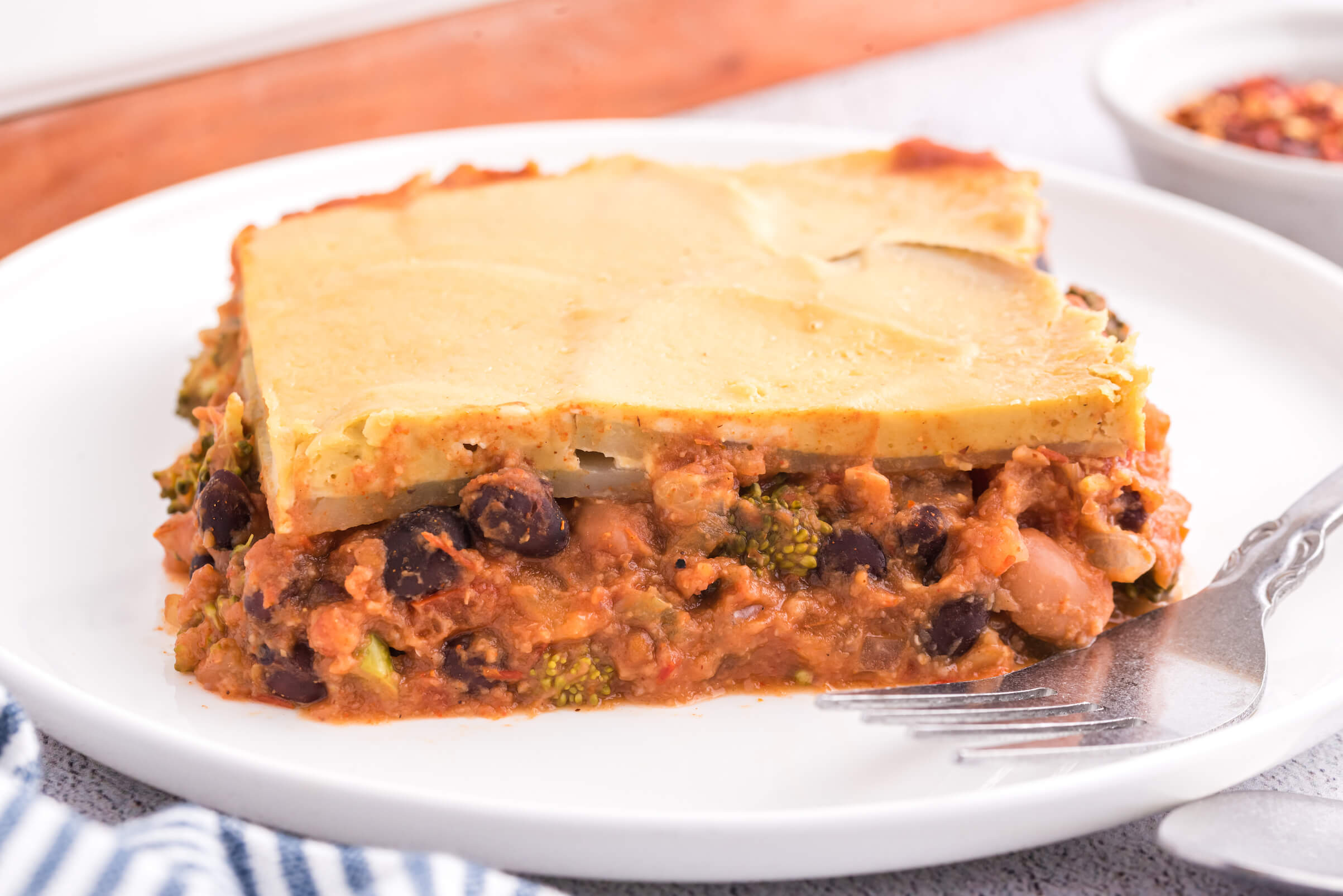
In the whole foods plant-based world, potatoes are free from the harsh judgment they receive from certain fad diets. They’re really a bit of a trifecta — wholesome, delicious, and deeply satisfying. Our Baked Chili and Potato Casserole is a perfect example — grounding potatoes are sautéed with broccoli and then layered on top of savory bean chili to produce a meal that not only comforts, but also offers plenty of protein, fiber, minerals, vitamins, and phytonutrients. In other words, this seemingly indulgent dish is also good for you!
A Final Concern: What’s the Deal with Green Potatoes?
Keep potatoes around long enough, and the spuds will start turning green (thanks to chlorophyll) and grow sprouts.
The question is: Are potatoes safe to eat when they’re green and have sprouts?
While chlorophyll itself is harmless, it can indicate the presence of solanine, a toxin that protects the potato against insects, bacteria, and other threats.
While all potatoes contain small amounts of solanine, green potatoes produce more.
The consumption of high levels of this toxin can cause cell damage and intestinal issues in humans.
While you can’t tell solanine concentration just by looking at a potato, it’s likely that the greener the potato, the more solanine it contains.
Cooking doesn’t reduce solanine levels, but you can cut the green parts out and remove the sprouts. Peeling a green potato can also reduce its solanine levels, but if a potato is very green or tastes bitter, it’s best to avoid eating it for safety’s sake!
To prevent your potatoes from turning green, store them in a dark, cool place.
The Bottom Line: Are Potatoes Healthy?
For most people, whole potatoes can make a valuable and affordable contribution to a healthy, balanced diet. Colorful potatoes, in particular, such as red-skinned, purple, and blue potatoes, have the most nutrients. If you are diabetic or struggling with weight issues, however, you may want to limit your intake of white or russet potatoes.
And, no matter how you eat them, it’s best to avoid them fried, processed, or covered in unhealthy toppings.
Tell us in the comments:
- Do you still have questions about potatoes?
- What are your favorite types of potatoes? And how do you like to prepare them?
Featured Image: iStock.com/Scukrov

